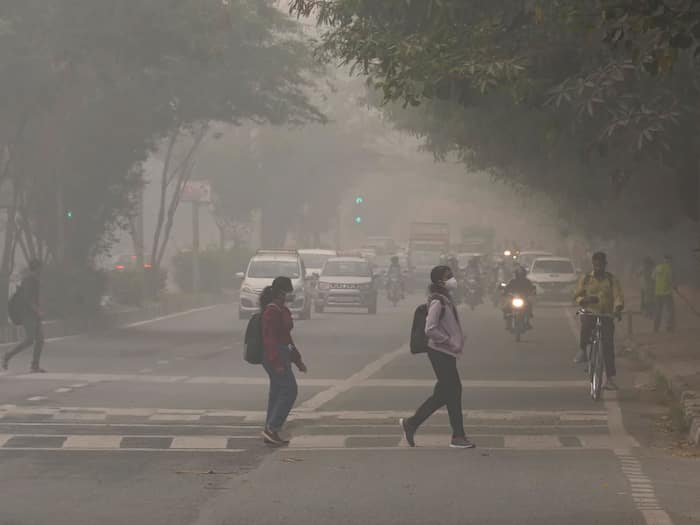The AQI stood at 275 (poor category) at 7 am and gradually rose to 322 by 12 noon. Pollution levels neared the “severe” category (AQI between 400 and 450) in some areas.

New Delhi: Delhi recorded a jump in pollution levels and a smoky haze returned on Monday morning after residents flouted the ban on firecrackers on Diwali night. The city recorded its best air quality on Diwali day in eight years on Sunday, with its 24-hour average Air Quality Index (AQI) settling at 218 at 4 pm.
Firecrackers bursting till late Sunday night led to a spike in pollution levels amid low temperatures.
The AQI stood at 275 (poor category) at 7 am and gradually rose to 322 by 12 noon. Pollution levels neared the “severe” category (AQI between 400 and 450) in some areas, including Ayanagar (382), Central Road Research Institute (393) and Pusa (391).
However, Bihar’s Begusarai and Bhubaneswar in Odisha recorded the worst AQI in the country, at 401 and 382, respectively. Of the 10 cities with the worst air quality as of 1 pm, four were in Odisha, three in Bihar, and one each in Andhra Pradesh, Punjab and Haryana.
Indian cities with the worst air quality index at 1 pm:
- Begusarai, Bihar (401)
- Bhubaneswar, Odisha (382)
- Chittoor, Andhra Pradesh (375)
- Siwan, Bihar (372)
- Balasore, Odisha (366)
- Bathinda, Punjab (359)
- Kaithal, Haryana (357)
- Cuttack, Odisha (356)
- Talcher, Odisha (353)
- Bhagalpur, Bihar (350)
According to the Central Pollution Control Board (CPCB) data, in Delhi, the 24-hour average AQI was 323, higher than Sunday’s AQI of 218 recorded at 4 pm. An AQI between 300 and 400 is said to be “very poor”, and according to the CPCB, can cause respiratory illness on prolonged exposure.
According to the Delhi Pollution Control Committee (DPCC) data, PM2.5 pollution levels at the Jawaharlal Nehru Stadium soared to 1,423 micrograms per cubic metre by 2 am before it gradually came down to 101 micrograms per cubic metre by 12 noon due to rise in temperatures.
The PM2.5 concentration at Okhla stood at 1,629 micrograms per cubic metre at 1 am and dipped to 157 micrograms per cubic metre by 12 noon. At 12 midnight, the air quality monitoring station at Anand Vihar recorded a PM2.5 concentration of 1,985 micrograms per cubic metre, the data showed.
Delhi recorded an AQI of 312 on Diwali last year, 382 in 2021, 414 in 2020, 337 in 2019, 281 in 2018, 319 in 2017 and 431 in 2016, according to Central Pollution Control Board data.
The city’s AQI a day after Diwali stood at 360 in 2015; 445 in 2016; 403 in 2017; 390 in 2018; 368 in 2019; 435 in 2020, 462 in 2021 and 303 in 2022.

